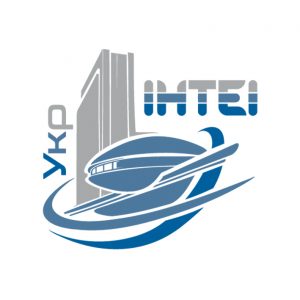Senchenko V. V. — PhD in Engineering, Senior Researcher of Dobrov Institute for S&T Potential and Science History Studies of NAS of Ukraine, 60, Shevchenko Blvd, 01032, Kуіv, Ukraine; +38(044) 236-99-43; seva46@ukr.net
Soloviov V. P. — Doctor of Science in Economics, PhD in Engineering, Professor, Deputy Director of Dobrov Institute for S&T Potential and Science History Studies of NAS of Ukraine, 60, Shevchenko Blvd, 01032, Kiev, Ukraine; +38(044) 486-63-54; solovyov@nas.gov.ua
FOUR-POINT SPIRAL OF INNOVATION ACTIVITY AND ITS INFLUENCE ON CREATION OF NEW KNOWLEDGE AND TECHNOLOGY
Abstract. The analysis of possibilities of concept employment of a four-point spiral is carried out. The relevance of the research topic is conditioned by the growing role of society in creation and promotion of innovative products. In this regard, the formation of new channels for the transfer of requests from consumers of innovative products to applied science are analyzed. The concept of a four-point spiral expands the known paradigm of the triple spiral. Along with science, industry and the state, society plays important role in the innovation process. The core of the fourth spiral in this model is consumers of innovative products. This model stimulates the creation of innovations expected by consumers. The article analyzes trends in the development of innovations initiated by consumers of innovative products. Inclusion in the process of innovation development of the economy of the fourth player — public organizations — is proposed to be considered as the formation of the network structure of innovators. The role of virtual communities as a powerful tool for aggregating new knowledge and experience of clients, integrating them into the corporate system for making strategic decisions is considered. The use of such tools carries great potential, provided that producers are able to optimally integrate the real needs of consumers into technological innovation. Virtual cooperation in the scientific sphere is of special importance. Virtual network structures (VNS), as a scientific and practical direction, require the creation of new concepts, scientific ideas and tools. Their creation is closely connected with cybernetics, network technologies, modern sections of applied mathematics, economic theory and psychology. The theory and practice of VNS is based on modern economic theory, system analysis and operations research, optimization methods, and intelligent information technologies. The expediency of using virtual network structures as a human-machine interface with regard to the transformation of formalized knowledge into the parameters of management of the production function is shown.
Keywords: four-point spiral, user function, human-machine interface, channels for transferring requests to applied science, virtual network structures, diffusion and innovationю
REFERENCES
1. European Commission (2014) RIS3 guide. Brussels: European Commission.
2. Carayannis E.G., Campbell D.F.J. (2010) Triple Helix, Quadruple Helix and Quintuple Helix, and how do
knowledge, innovation and the environment relate to each other? A proposed framework for a transdisciplinary analysis of sustainable development and social ecology. International Journal of Social Ecology and Sustainable Development. Vol. 1, no. 1, pp. 41–69.
3. Itskovits G. (2010) Troynaya spiral. Universitety — predpriyatiya — gosudarstvo. Innovatsii v deystvii [Triple helix. Universities — enterprises — the state. Innovations in action]. Transl. from English. Еd. A.F. Uvarova. Tomsk (in Russ.): Izd-vo Tomsk. gos. un-ta sistem upr. i radioelektroniki Publ., 238 р.
4. Soloviov V.P. (2016) Printsipy sotsializatsii innovatsionnogo faktora ekonomicheskogo razvitiya na osnove
modeli “chetyrekhmernoy spirali” (Quadruple Helix), Materialy Mezhdunarodnoy nauchno-prakticheskoy konferentsii “Sistema “nauka-tekhnologiiinnovatsii”: metodologiya, opyt, perspektivy” [Principles of socialization of the innovation factor of economic development on the basis of the “fourdimensional helix” model (Quadruple Helix), Proceedings of the International Scientific and Practical Conference “System of Science-Technology Innovation: methodology, experience, prospects”], Minsk (in Bel.), 1 December. pp. 19-27.
5. Arnkil R., Jarvensivu A., Koski P., Piirainen T. (2010) Exploring Quadruple Helix: Outlining user-oriented innovation models. Final Report on Quadruple Helix Research for the CLIQ project, Working Papers 85/2010. Tampere: University of Tampere.
6. Karayannis E., Grigorudis E. (2016) Chetyrekhzvennaya spiral innovatsiy i “umnaya spetsializatsiya”:
proizvodstvo znaniy i natsionalnaya konkurentosposobnost [Four-link innovation spiral and “smart
specialization”: knowledge production and national competitiveness]. Forsayt. Vol. 10, no. 1, pp. 31-43.
7. Palahin O.V., Senchenko V.V., Soloviov V.P. (2012) Virtualni naukovo-innovatsiini tsentry yak novi orhanizatsiino-tekhnolohichni systemy stvorennia innovatsiinoi produktsii [Virtual scientific and innovation centers as new organizational and technological systems for creation of innovative products]. Upravlinski innovatsii [Management Innovations]. Vol. 2, pp. 23-30.
8. Devterov I. V. (2012) Sotsializatsiia liudyny u kiberprostori [Socialization of man in cyberspace] monograph. Kyiv (in Ukr.): NTUU “KPI”, 360 p.

